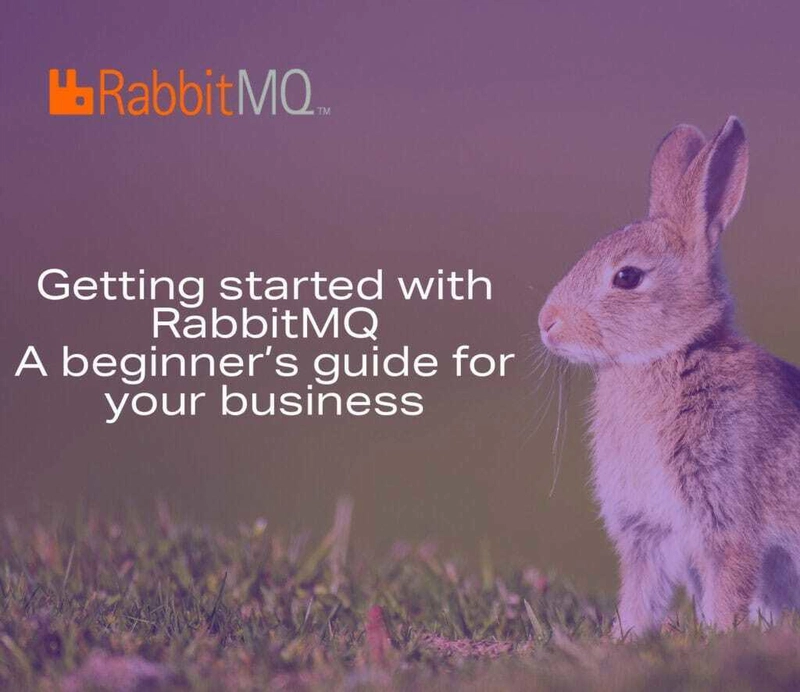Introduction
What is Message Queuing?
Message queuing is a communication method used in distributed systems to allow asynchronous message passing between different components of an application. Instead of direct communication, messages are sent to an intermediary message broker, which holds them until the receiving component is ready to process them. This helps in decoupling services, making the system more scalable, fault-tolerant, and resilient to failures.
What is RabbitMQ?
RabbitMQ is an open-source message broker that helps applications communicate asynchronously by sending, receiving, and managing messages efficiently. It is based on the Advanced Message Queuing Protocol (AMQP) and provides features like message acknowledgment, retry mechanisms, and dead-letter queues.
Why Use RabbitMQ?
RabbitMQ is widely used in microservices, event-driven architectures, and background job processing because of its many advantages:
- Decoupling Services: Producers and consumers don’t need to know about each other’s existence, reducing dependencies.
- Scalability: Consumers can be scaled horizontally to process more messages as demand increases.
- Reliability: Ensures messages are delivered even if a service crashes.
- Load Balancing: Distributes messages among multiple consumers for efficient processing.
- Retry and Dead Letter Queues (DLQs): Automatically retries failed messages and handles undelivered messages properly.
- Supports Multiple Exchange Types: Direct, topic, fanout, and header exchanges provide flexibility in routing messages.
Common Use Cases for RabbitMQ
- Task Queues: Background processing of jobs like image processing, notifications, etc.
- Microservices Communication: Reliable event-driven communication between microservices.
- Real-time Data Processing: Streaming logs, chat applications, and stock market feeds.
- Asynchronous API Requests: Handling long-running API requests asynchronously.
Prerequisites
Before we dive in, ensure you have the following installed:
- Node.js (LTS version recommended)
- RabbitMQ Server (Download & Install)
- amqplib (RabbitMQ client for Node.js)
To install amqplib, run:
npm install amqplib
Step 1: Setting Up a RabbitMQ Connection
We first need to establish a connection with RabbitMQ. Create a connection.ts file:
import amqp from 'amqplib';
export const connectRabbitMQ = async () => {
try {
const connection = await amqp.connect('amqp://localhost');
const channel = await connection.createChannel();
console.log('Connected to RabbitMQ');
return { connection, channel };
} catch (error) {
console.error('Error connecting to RabbitMQ:', error);
throw error;
}
};
Explanation of Parameters
-
amqp.connect('amqp://localhost'): Establishes a connection to RabbitMQ running onlocalhost. You can replace it withamqp://username:password@host:portfor remote connections. -
createChannel(): Creates a channel to communicate with RabbitMQ. Channels help send and receive messages efficiently.
Step 2: Creating a Producer (Sending Messages)
The producer sends messages to a queue. Create a producer.ts file:
import { connectRabbitMQ } from './connection';
const sendMessage = async (queue: string, message: string) => {
const { channel } = await connectRabbitMQ();
await channel.assertQueue(queue, { durable: true });
channel.sendToQueue(queue, Buffer.from(message));
console.log(`Message sent to ${queue}:`, message);
};
sendMessage('task_queue', 'Hello, RabbitMQ!');
Explanation of Parameters
-
queue: The name of the queue where the message will be sent. -
channel.assertQueue(queue, { durable: true }): Ensures the queue exists before sending messages.-
{ durable: true }: Makes the queue persistent, ensuring messages survive broker restarts.
-
-
{ durable: true }: Sends a message in buffer format to the specified queue.
Step 3: Creating a Consumer (Receiving Messages)
Now, let's create a consumer that listens for messages. Create a consumer.ts file:
import { connectRabbitMQ } from './connection';
const consumeMessages = async (queue: string) => {
const { channel } = await connectRabbitMQ();
await channel.assertQueue(queue, { durable: true });
console.log(`Waiting for messages in ${queue}...`);
channel.consume(queue, (message) => {
if (message) {
console.log(`Received: ${message.content.toString()}`);
channel.ack(message); // Acknowledge message
}
});
};
consumeMessages('task_queue');
Explanation of Parameters
-
channel.consume(queue, callback): Listens for messages from the queue. -
message.content.toString(): Converts the message from buffer format to a readable string. -
channel.ack(message): Acknowledges that the message has been processed successfully, so RabbitMQ can remove it from the queue.
Running the Setup
- Start RabbitMQ (if not running already):
rabbitmq-server
- Run the consumer to start listening:
node consumer.js
- Run the producer to send a message:
node producer.js
- Check your console! You should see the sent and received messages.
Conclusion
Congratulations! You've successfully set up RabbitMQ with Node.js and TypeScript, created a producer to send messages, and a consumer to process them.
This is just the beginning! 🚀 In the next blogs, we will dive deeper into advanced RabbitMQ topics like error handling, retries, dead-letter queues, and logging. Stay tuned! 🔥



Top comments (0)